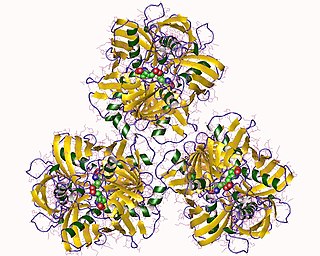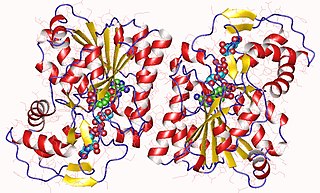| amino-acid racemase | |||||||||
|---|---|---|---|---|---|---|---|---|---|
| Identifiers | |||||||||
| EC no. | 5.1.1.10 | ||||||||
| CAS no. | 9068-61-5 | ||||||||
| Databases | |||||||||
| IntEnz | IntEnz view | ||||||||
| BRENDA | BRENDA entry | ||||||||
| ExPASy | NiceZyme view | ||||||||
| KEGG | KEGG entry | ||||||||
| MetaCyc | metabolic pathway | ||||||||
| PRIAM | profile | ||||||||
| PDB structures | RCSB PDB PDBe PDBsum | ||||||||
| Gene Ontology | AmiGO / QuickGO | ||||||||
| |||||||||
In enzymology, an amino-acid racemase (EC 5.1.1.10) is an enzyme that catalyzes the chemical reaction
- an L-amino acid a D-amino acid
Hence, this enzyme has one substrate, L-amino acid, and one product, D-amino acid.
This enzyme belongs to the family of isomerases, specifically those racemases and epimerases acting on amino acids and derivatives. The systematic name of this enzyme class is amino-acid racemase. This enzyme is also called L-amino acid racemase. This enzyme participates in 4 metabolic pathways: glycine, serine and threonine metabolism, cysteine metabolism, D-glutamine and D-glutamate metabolism, and D-arginine and D-ornithine metabolism. It employs one cofactor, pyridoxal phosphate.





